|
We are proud to announce that the ELT-MOSAIC project enters phase B1.This phase will be crucial for the consolidation of the instrument architecture and the availability of the planned resources, and is planned to last for 18 months, until its final specifications and architecture review (SAR). It is an important step for this ELT project conducted by an international consortium including 22 institutional partners located in 13 countries, led by the CNRS. The list of parties includes: University of Vienna (Austria), Universidade de Sao Paulo and LNA (Brazil), Universities of Helsinki and Turku (Finland), LAM, GEPI, IRAP, and OCA (France), AIP and Heidelberg University (Germany), INAF (Italy), NOVA (Netherlands), F. Ciencias and CAUP (Portugal), University of Madrid and IAA (Spain), Universities of Lund, Stockholm and Uppsala (Sweden), University of Geneva and EPFL (Switzerland), STFC/ATC, Durham University and Oxford RAL (UK), and University of Michigan (USA). More than 350 scientists and engineers participate into this effort. The MOSAIC Kick Off that took place in Paris on march 14th and 15th focused mainly on management organisation, and on internal engineering and scientific presentations. We would like to thank everyone involved in the project for this milestone achievement ! | ||
|
This meeting starts the Phase B1 of the ELT-MOSAIC project, that will last for 18 months and will go until the Specifications and Architecture Review (SAR). This phase is intended to consolidate the architecture of the instrument and the availability of the resources, an important step for this ELT project conducted by an international consortium including 22 institutional partners located in 13 countries, led by the CNRS. The list of parties includes: University of Vienna (Austria), Universidade de Sao Paulo and LNA (Brazil), Universities of Helsinki and Turku (Finland), LAM, GEPI and IRAP (France), AIP and Heidelberg University (Germany), INAF (Italy), NOVA (Netherlands), F. Ciencias and CAUP (Portugal), University of Madrid and IAA (Spain), Universities of Lund, Stockholm and Uppsala (Sweden), University of Geneva and EPFL (Switzerland), STFC/ATC, Durham University and Oxford RAL (UK), and University of Michigan (USA). More than 350 scientists and engineers participate into this effort. | ||
 We are proud to announce that 250000€ were awarded to MOSAIC by Île-de-France DIMACAV for the prototyping of an integral field unit. The Area of Major Interest ACAV + (Domaine d'Intérêt Majeur ACAV+ - DIMACAV) is labeled by the Île-de-France Region for the period 2017-2020 in order to support Paris region research in the fields of Astrophysics and Conditions of Appearance of Life. Link to the DIMACAV 2020 results
We are proud to announce that 250000€ were awarded to MOSAIC by Île-de-France DIMACAV for the prototyping of an integral field unit. The Area of Major Interest ACAV + (Domaine d'Intérêt Majeur ACAV+ - DIMACAV) is labeled by the Île-de-France Region for the period 2017-2020 in order to support Paris region research in the fields of Astrophysics and Conditions of Appearance of Life. Link to the DIMACAV 2020 results
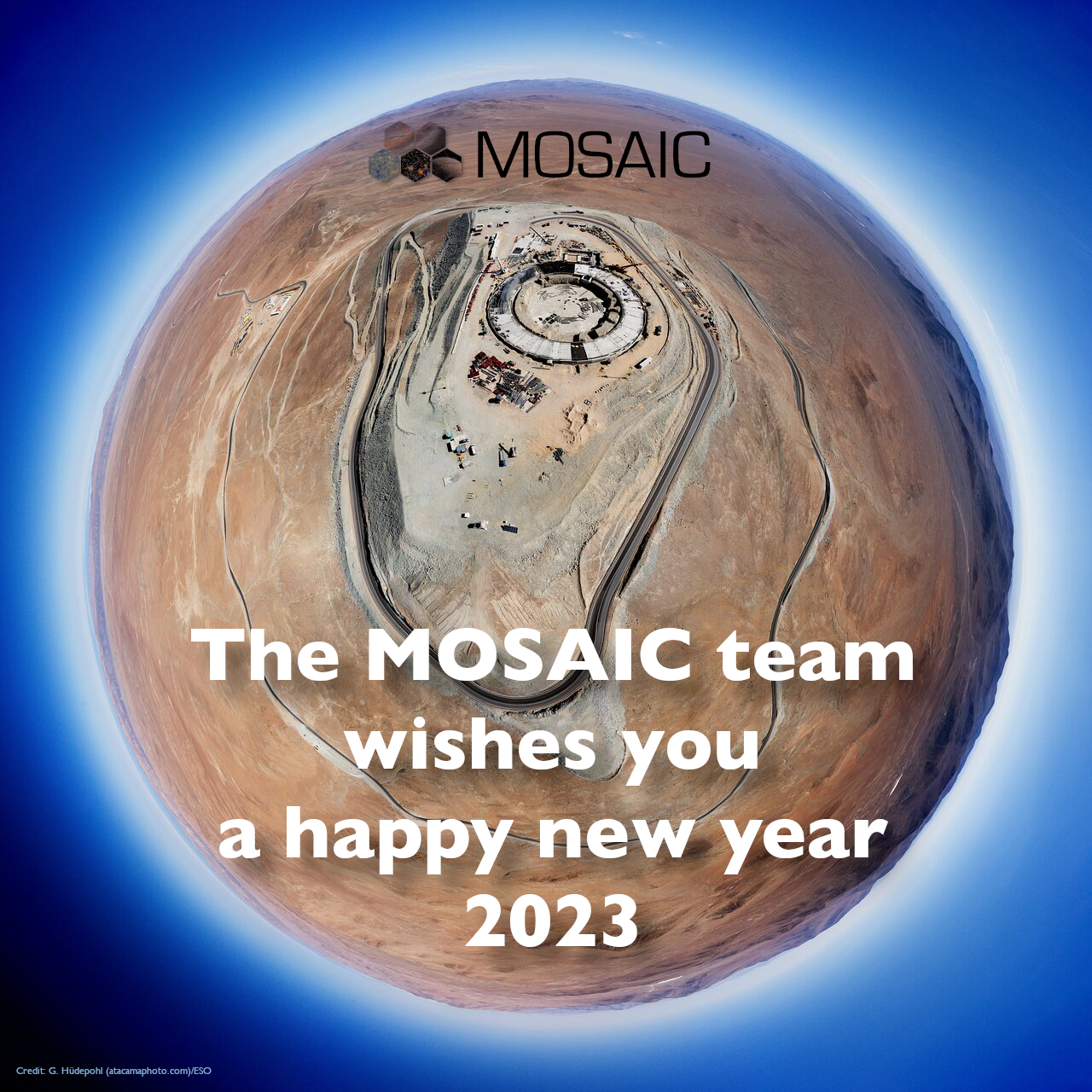
The MOSAIC Consortium wishes a wonderful new year 2023 to all of You.
MOSAIC http://www.mosaic-elt.eu, entering phase B in 2023.
The European organisation ESO has embarked on the construction of the Extremely Large Telescope (ELT) in the middle of the Chilean desert. The telescope and its structure reach a volume comparable to eight times that of the Arc de Triomphe in Paris.
A monster of technology
The collecting power of its ultra-giant mirror, 39 metres in diameter, is equivalent to bringing together the 16 largest telescopes in the world. When it is built, probably shortly after 2026, the ELT will be able to observe the weakest sources in the sky. It will be able to study objects so far away that they are inaccessible to other telescopes, unlocking many mysteries in cosmology, about the formation of galaxies, for example the nature of small galaxies or star clusters far beyond our Galaxy or Local Group.
Moreover, since the resolving power of a telescope depends on its size, the ELT will be able to solve the stars with the smallest apparent sizes: the apparent size of the most distant galaxies is much smaller than an arcsecond (for comparison, the Moon’s apparent size is 1800 arcseconds). At these scales, observations are very much affected by the Earth’s atmospheric turbulence, requiring advanced techniques to overcome it, such as adaptive optics.
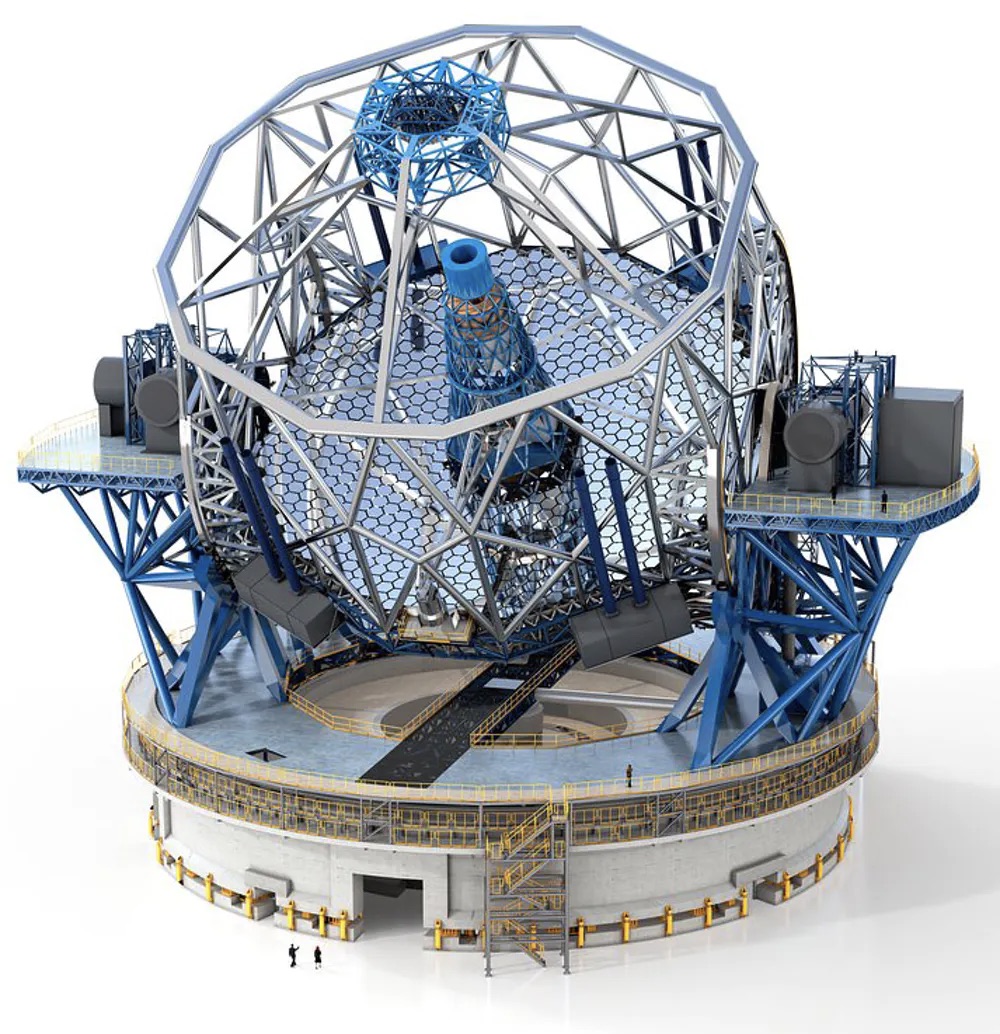 From the outset of the project, ESO has made a huge commitment to focus all its efforts on ensuring the highest possible spatial resolution. This is equivalent to counting the petals of a daisy 100 kilometres away! The goal is to distinguish an extrasolar planet from its star to distances approximately the thickness of a spiral arm of our Galaxy, in order to study in detail the planetary content of a considerable number of nearby and less nearby stars.
From the outset of the project, ESO has made a huge commitment to focus all its efforts on ensuring the highest possible spatial resolution. This is equivalent to counting the petals of a daisy 100 kilometres away! The goal is to distinguish an extrasolar planet from its star to distances approximately the thickness of a spiral arm of our Galaxy, in order to study in detail the planetary content of a considerable number of nearby and less nearby stars.
It’s a gamble that’s not insignificant since the main mirror will be made up of 798 segments, each 1.40 metres long, which will have to be aligned with an unequalled precision of only 15 millionths of a millimetre! The other four mirrors of the telescope will have to guarantee the same precision. In particular, two of these mirrors can be mechanically deformed to compensate for tiny variations in the path of light due to atmospheric turbulence. This is made possible by adaptive optics based on complex turbulence analysis systems.
Faced with the challenge of building a mastodon telescope capable of resolving the smallest sources of light in the universe, the European organisation ESO took an even riskier gamble: first install the most sophisticated instruments capable of obtaining the finest spatial resolutions, and only then the two instruments that use the telescope’s maximum collecting power instead (this being guaranteed, whatever the performance of the telescope and its enormous structure).
Read more: The ELT will be the largest telescope ever built...
|
| ||
| |||||
|
| ||
9-13 septembre 2019, Romelink to the website of the conferenceScientific Rationale | ||


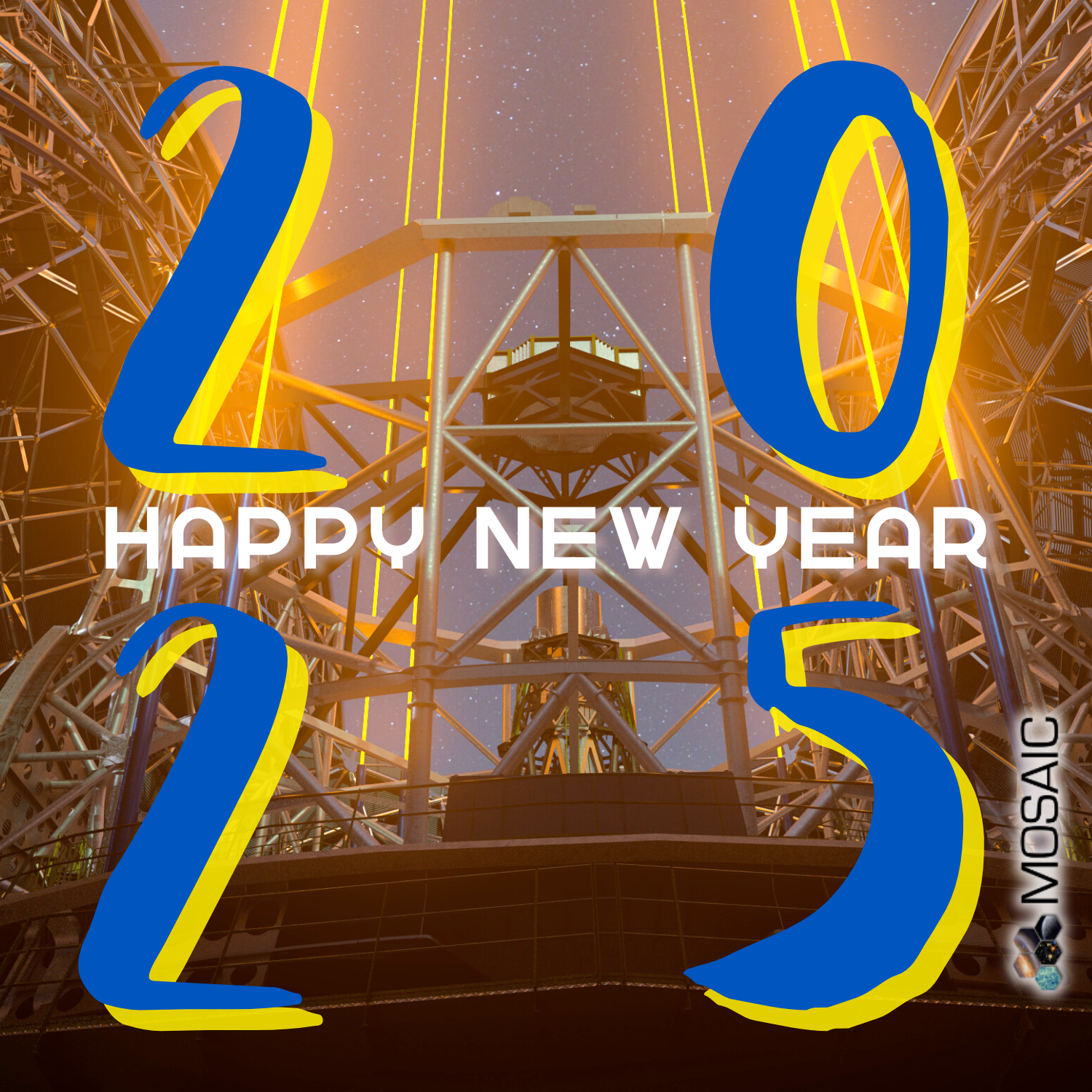
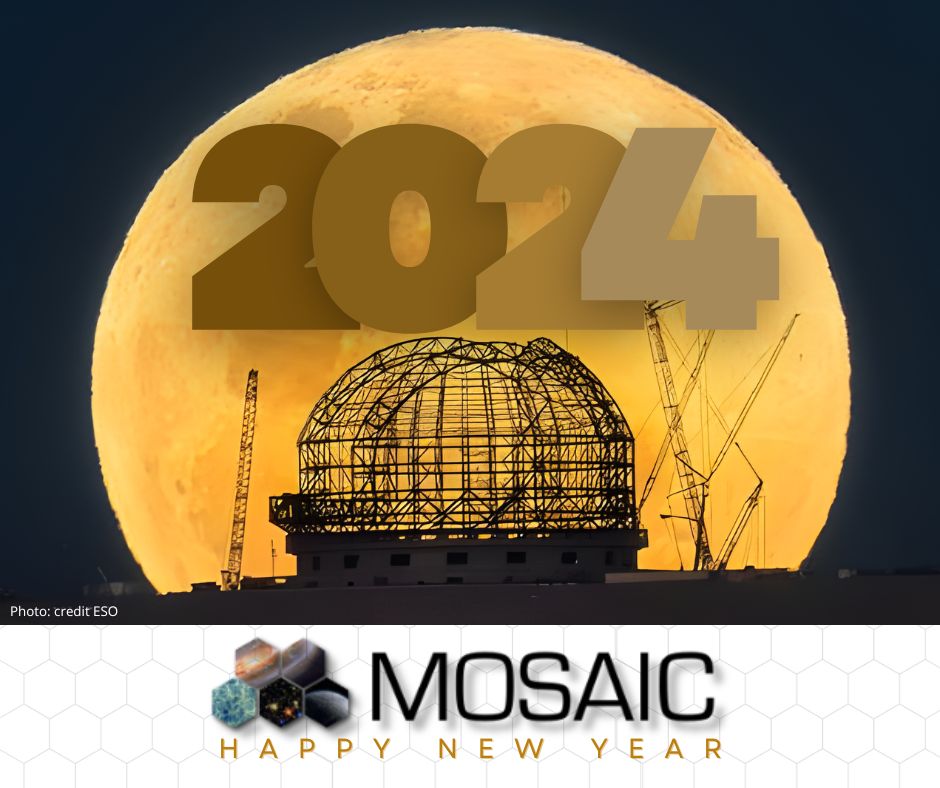
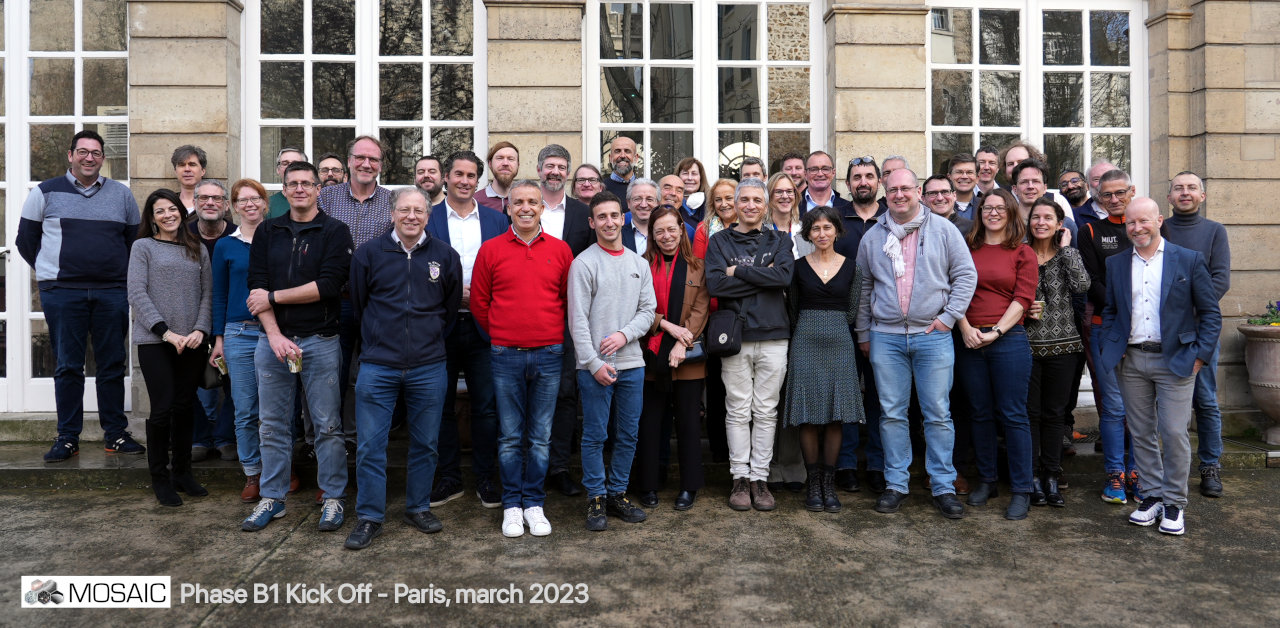
 The MOSAIC collaboration is pleased to announce the Phase B1 Kick-off Meeting, which will take place in Paris on March 14th-15th. The management meeting will take place in the afternoon of the 14/03, with the presence of ESO representatives. The 15/03 will be dedicated to our internal technical and scientific meetings, including splinters. The meeting will take place in hybrid mode, both for the plenary sessions and splinters. The Agenda can be found
The MOSAIC collaboration is pleased to announce the Phase B1 Kick-off Meeting, which will take place in Paris on March 14th-15th. The management meeting will take place in the afternoon of the 14/03, with the presence of ESO representatives. The 15/03 will be dedicated to our internal technical and scientific meetings, including splinters. The meeting will take place in hybrid mode, both for the plenary sessions and splinters. The Agenda can be found 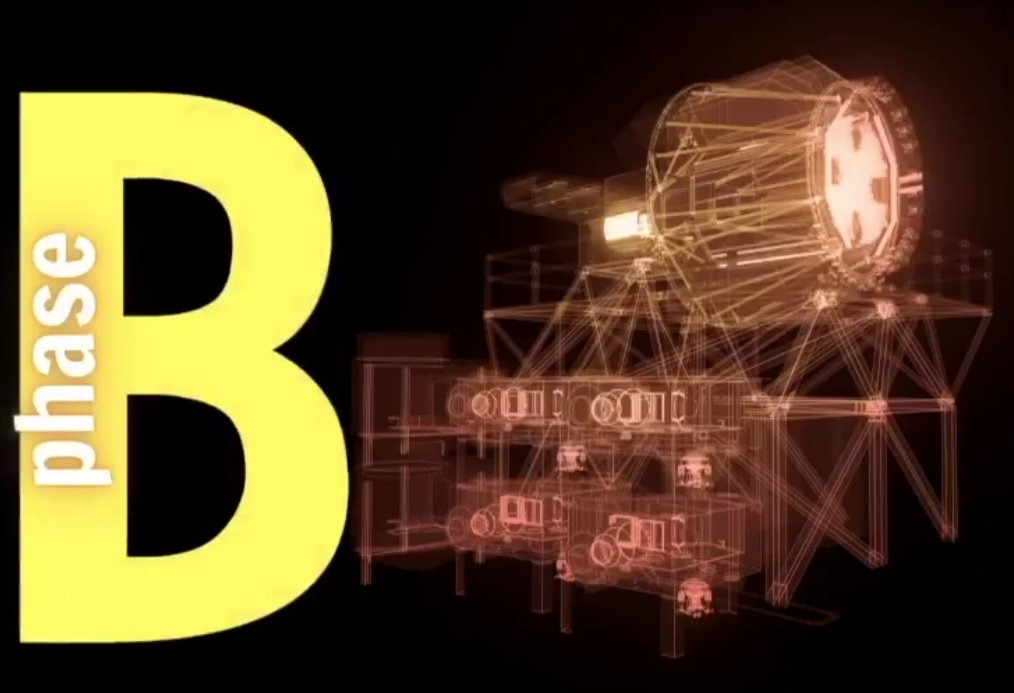 After Phase A and during the pre-Phase B, the MOSAIC design concept has been consolidated, following collaborative work between the Consortium and ESO. The ESO Council approved on Tuesday Dec. 7th the proposed MOSAIC Construction Agreement which will be signed between the CNRS and ESO in March 2022. Phase B will officially start with the MOSAIC kickoff in June next year. Still, since the project is ready to move forward, an internal kickoff in February will set the real start of the Preliminary Design and Technology Completion phase.
After Phase A and during the pre-Phase B, the MOSAIC design concept has been consolidated, following collaborative work between the Consortium and ESO. The ESO Council approved on Tuesday Dec. 7th the proposed MOSAIC Construction Agreement which will be signed between the CNRS and ESO in March 2022. Phase B will officially start with the MOSAIC kickoff in June next year. Still, since the project is ready to move forward, an internal kickoff in February will set the real start of the Preliminary Design and Technology Completion phase.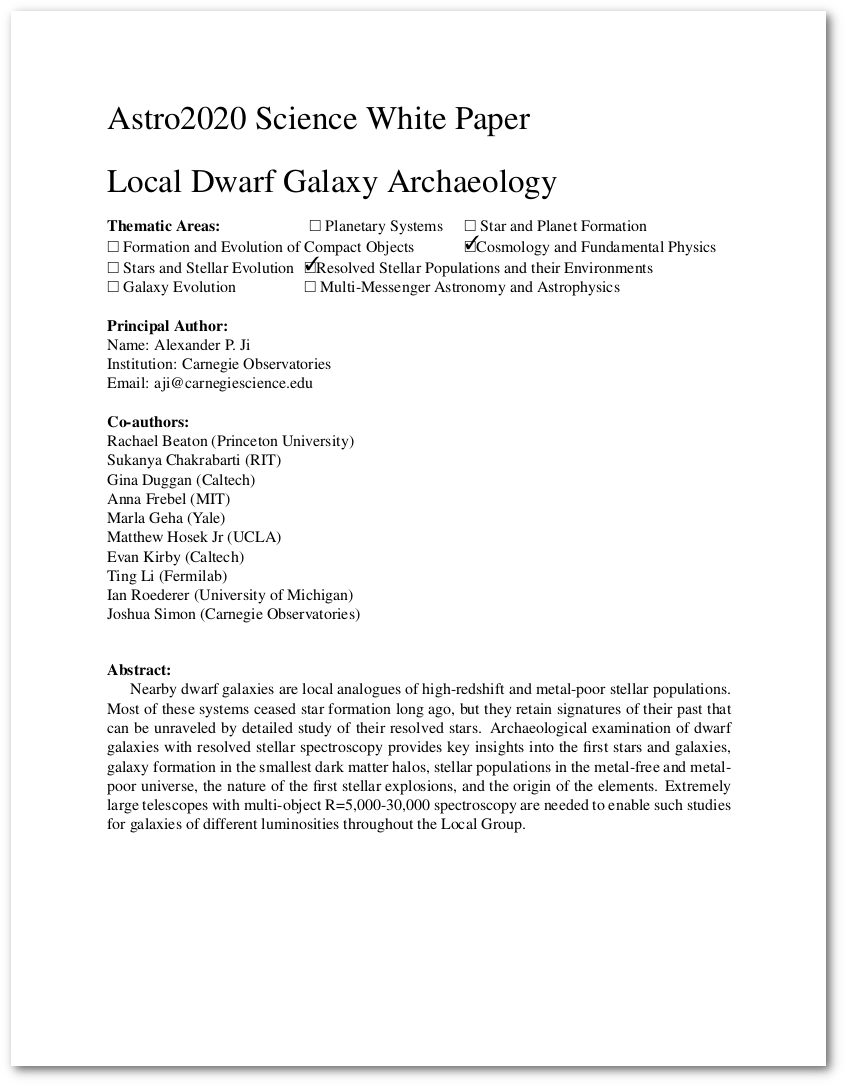
 Registering to the MOSAIC community will keep you updated to with everything related to MOSAIC. Being registered will allow us to take you into account in our science programs and news. You will receive invitations to workshops and symposia. It will take you less than 5 minutes !
Registering to the MOSAIC community will keep you updated to with everything related to MOSAIC. Being registered will allow us to take you into account in our science programs and news. You will receive invitations to workshops and symposia. It will take you less than 5 minutes !